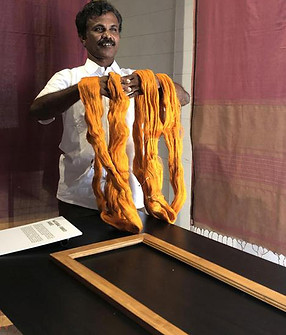Banana Fabric
Banana, often referred to as Kalpataru, a name harking back to an ancient fruit cultivated worldwide, holds a unique distinction. With an impressive annual yield of 24.8 million tonnes, India stands as the leading global banana producer, trailing China, the Philippines, Ecuador, and Brazil. India's contribution accounts for a substantial 22% of the global banana output. Notably, banana fibre production not only contributes to textiles but also provides livelihoods for numerous underprivileged individuals in India.
Banana crops undergo harvesting two to four times annually, often resulting in discarded stems. Remarkably, banana fibre serves as a substitute in the pulp sector. This remarkable fibre is progressively gaining traction in the fashion industry, garnering recognition from prominent clothing lines and fashion designers. Beyond its fashion appeal, banana fibre boasts eco-friendliness and biodegradability, setting it apart from synthetic counterparts.

Thriving in hot tropical climates, banana plants flourish sans the need for herbicides or pesticides, demonstrating rapid growth. Diverse varieties of banana plants boast high fibre content. Following the extraction of banana fruit, the stem yields fibres that find purpose in crafting curtains, bags, cushion covers, neckties, and even exquisite banana silk fibre carpets handcrafted in Nepal. The demand for banana fibre extends to several nations including the United States of America, Malaysia, Korea, the European Union, and the Philippines. Notably, Japan's currency, the Yen, incorporates banana fibre, hinting at the potential for substantial foreign exchange earnings through fibre exportation from India.

Banana fabric presents an elegant, cruelty-free textile that exudes a natural sheen reminiscent of true silk. Its versatility shines through as it can be fashioned into a range of fabrics, from the exceptionally soft and lustrous threads within the stem, used for items like kimonos and saris, to coarser exterior strands suitable for weaving baskets and crafting handbags. The fabric's remarkable moisture absorption capability renders it ideal for warm climates, offering comfort through rapid moisture release.
The transformation of banana stem fibres into silk-like fabric may seem improbable, yet it's a straightforward process that yields remarkable results. Its gleam, affordability, and environmentally conscious attributes make banana fabric a favoured choice among designers and producers. Interestingly, banana fabric also finds application in the creation of fire-resistant garments, maintaining cost-effectiveness.
The potential of banana-fibre fabric as a leading contender in sustainable fashion is undeniable. Experts project that with mass production, this cloth could rival or even surpass the cost-effectiveness of cotton and linen. Fabric derived from banana fibres boasts high sheen, lightweight feel, swift moisture absorption, and a linen-like appearance. This environmentally friendly alternative has the potential to replace a variety of commonly used materials.
